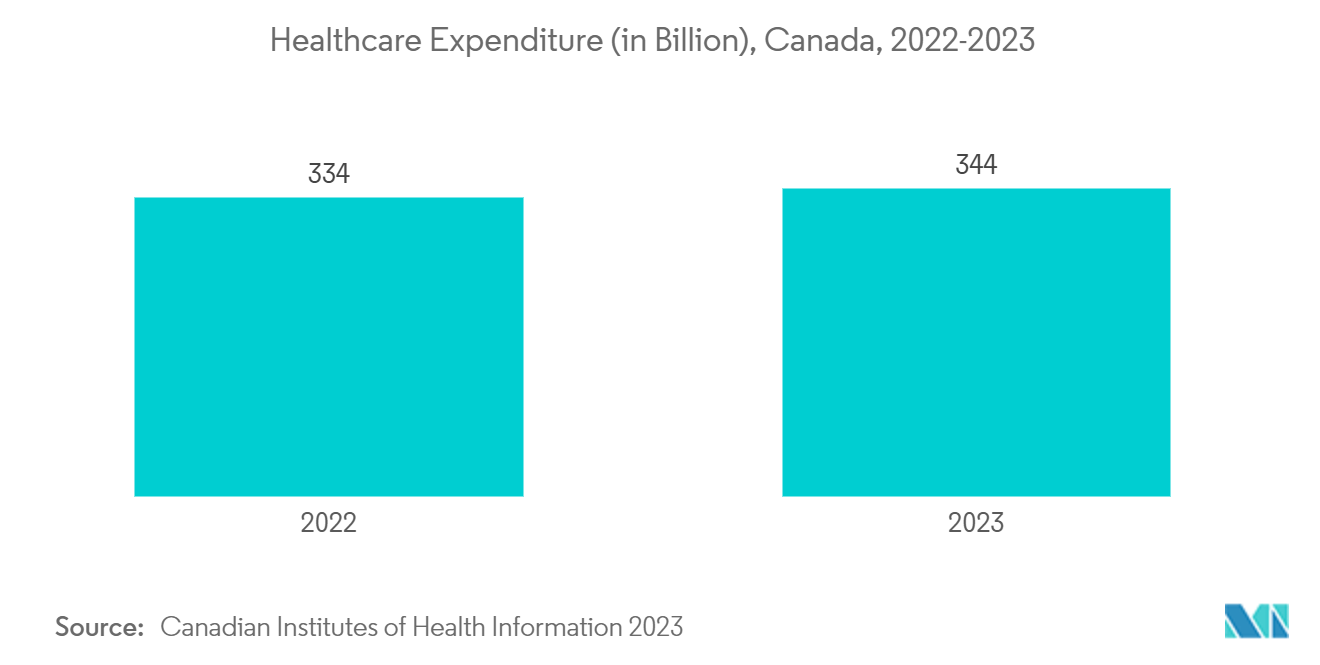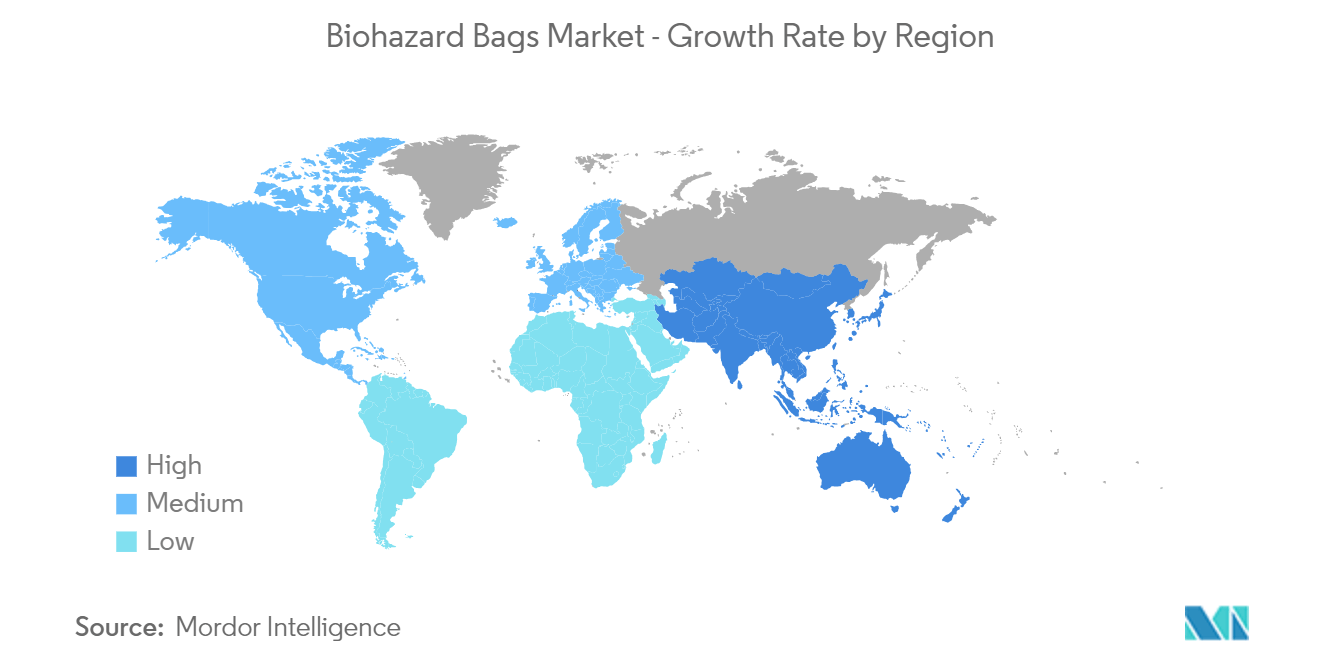Market Trends of Biohazard Bags Industry
Hospital Segment Expected to Hold a Significant Market Share Over the Forecast Period
Hospitals are expected to experience significant growth due to the increasing number of patients with infectious and chronic diseases. They are also the largest source of biohazard waste, leading to a high demand for biohazard bags in hospitals.
According to Statistics Canada 2023, there were 1,280 hospitals in Canada as of 2022. Hospital expenditure per capita appears to be the highest in less populated territories. Moreover, according to the American Hospital Association’s data in 2023, there were over 33.7 million hospital admissions across the United States in 2022. Given the high amount of biohazardous waste generated during surgical or diagnostic procedures, the high number of hospitals and community centers is expected to drive the segment’s growth during the forecast period.
Furthermore, many hospitals invite tenders to manage biomedical waste in their facilities. For example, in February 2022, the Regional Institute of Medical Sciences (RIMS), Imphal, India, issued a two-stage bid system inviting proposals from Government e-Marketplace (GeM) registered firms for the supply of hospital biohazard bags or biomedical waste collection bags for use in RIMS Hospital, Imphal. Moreover, all government and private hospitals are responsible for safe and effective biomedical waste management, leading to increased use of biohazard bags in hospitals worldwide and driving the segment’s growth.
Therefore, due to the aforementioned factors, such as the high patient pool in hospitals, the rising number of hospitals worldwide, and the initiatives taken by hospitals to increase the use of biohazard bags, the segment’s growth is expected to continue during the forecast period.

North America Expected to Hold a Significant Market Share in the Forecast Period
North America is expected to hold a significant market share in the biohazard bags industry. This is due to several factors, such as the high patient pool for various infectious and chronic diseases, increased awareness among people and the healthcare industry’s stakeholders about biohazardous waste management, and the strong presence of industry players in the region.
The United States is one of the largest contributors to the biohazard bags market due to the country's high burden of cancer. According to the American Cancer Society's Cancer Statistics 2022, 1,918,030 new cancer cases were predicted to occur in the United States in 2022. The waste produced in cancer centers is particularly dangerous since cancer treatment often involves chemotherapy and radiation therapy, which are hazardous to patients, employees, and visitors. Various medicines and diagnostics also use radioisotopes, which can cause mutations if exposed without protection. As a result, the high burden of cancer in the country is expected to boost the growth of the biohazard bags market during the forecast period.
In addition to the high patient pool, strategic initiatives adopted by market players are also contributing to the growth of the biohazard bags market in the region. For instance, in February 2024, Baxter International announced that it had completed the first phase of its intravenous (IV) bag recycling program pilot and was now expanding the pilot program. Launched in conjunction with Northwestern Medicine in Chicago, the program has since diverted more than six tons (or 12,000 pounds) of polyvinyl chloride (PVC) IV bag waste from landfills to be recycled for use in other non-medical products.
Owing to the abovementioned factors, such as the high patient pool for cancer and rising company initiatives, the growth of the market studied is anticipated to be high in the North American region.


